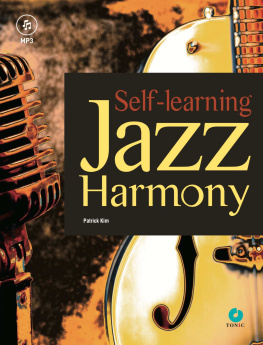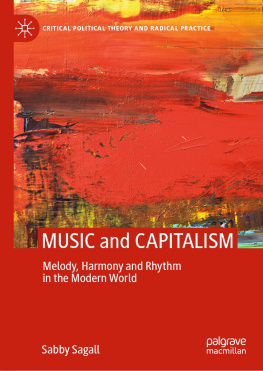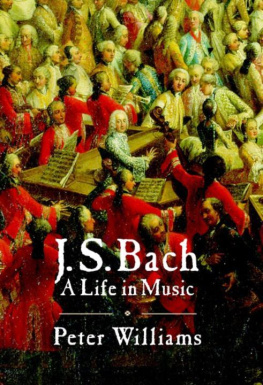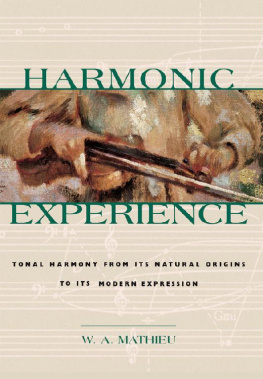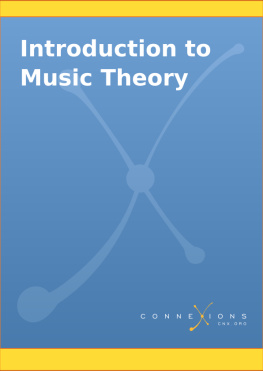About the Author
Since his retirement from the University of Maryland in 1993, Professor Helm has continued to write about C.P.E. Bach, German music, the discipline of musicology, and music in philosophy. He lives in Easton, Maryland with his wife Sallie, a retired lawyer.
Chapter 1
Melody Is Pure but Not So Simple
Melody implies harmony; harmony suggests melody. In the Western mind, the clarity, subtlety, and intimacy of pure melody are easily clouded over, or are moved into some kind of mixed category, by the infiltration of harmonyor polyphony, which only means music of more than one line of notes heard concurrently. When the Scottish folksinger Jean Redpath chooses to sing an old ballad entirely without accompaniment, as her way of penetrating directly to the heart of that music and that poem, her audience might be a little surprised, accustomed as they are to hearing such songs in harmonized versions. It is also unusual for a well-known composer to resist the powerful urge to harmonizeas in the meandering, almost-unaccompanied oboe solo that opens the second movement of Tchaikovskys Fourth Symphony, or the long, frenetic cadenza that puts an impatient end to the hesitant-sounding first movement of the Copland Clarinet Concerto, or the shepherds unaccompanied piping, evoking Weltschmerz and doom, at the start of the last act of Wagners Tristan und Isolde.
Melody remains the fount of all music, world without end, even though, for a thousand years, tunes of every kind in the West have been increasingly transported into the interior of that colossal edifice called harmony. From Gregorian chant and folksong and the melodies of the troubadours and trouvres to the present, pure melody in the West has continued to exist side by side with polyphony. Folksong as accompanied or unaccompanied melody will always spring from the earth like flowers. Melody types around the world follow common patterns shared by all peoples.
In some parts of the world there are still cultures and styles in which it can be inappropriate, if not barbarous or sacrilegious or dangerous, to create any kind of harmonymusical, religious, or political. Much traditional non-Western melody is not harmonized at all. India and south Asia, for example, are part of the vast musical territories whose ancient and labyrinthine traditions of melodyeven in parts of Bollywoodare only peripherally related to the Western idea of harmony. The classical raga of India is an intricate instrumental or vocal melody, improvised on the spot even though it must follow an elaborate pattern that may be centuries old, and using some pitchesmicrotonesthat a Western musician can find only (to use Charles Ivess expression) in the cracks be-tween the piano keys. The improvised introductory section of a classical ragaa tentative, leisurely, but increasingly specific exploration of the pitches and motives that the ensuing raga will be based uponcan be as intriguing, when sung or played by a first-class musician, as the main body of the raga. The raga itself is usually accompanied by a drone and a tuned drum that creates rhythms and pitch inflections almost never heard in Western classical music. Hearing microtones produced by a fine Indian player or singer can make ones hair stand on end with fascination and pleasure. The singers concentration on exact pitches is likely to require a suppression of vibrato, along with a timbre that is half a world away from the Western operatic ideal of bel canto. If a performer emits one note or rhythm or melodic element that is inappropriate to that particular ragaperhaps in a classical Hindustani performance featuring a sitar player, a drummer, and a dancer in the tradition of the god Shiva in his appearance as Lord of the Dancethe mistake is instantly noticed by a native audience.
The classical music of south Asia is the richest non-Western tradition of melody, but many other non-harmonic musics are also founded on venerable systems as endlessly complex as any other aspects of their cultures. It is possible for a Western musician to acknowledge and appreciate something of the scales, modes, rhythms, instruments, and vocal and instrumental performance styles of these systemsthe features that come to mind first. But a lifetime of study and performance is required to perceive the musical significance of their philosophies, their literatures, their religions. With intricacies and subtleties like these, who needs harmony? Thats the way it has long been in many non-Western musics around the globe: developing the endless possibilities of melody, with little else that might be called harmony in the Western sense, for so very long and so very far that some aspects of Western melody seem crude by comparison.
Chapter 2
Harmony, Unlike Melody, Is Pure Only in Theory
Strum a few chords on a guitar, or play a few chords on a piano, resisting the temptation to generate any tunes that the chords may suggest. Even at that, the top notes, or occasionally the bottom or middle notes, in the succession of chords are likely to connect in the ear to create something like a melody. The most wide-ranging melodies often derive their exceptional freedom from a secure basis in harmony. The music of hymns can sometimes be little more than chords laid out on the page, one after another, with just a few passing tones inserted here and there between chords; but we hear them predominantly as melodies. J.S. Bachs most straightforward settings of Lutheran chorales (hymns) have served musicians for nearly three hundred years as unsurpassed models of chord progression enriched by splendid counterpoint; but congregations think of them as melodies.
Is there such a thing as pure harmony? Sometimes a composer can come close to it, as in, say, the dark clouds of brass that open Sibeliuss tone poem Finlandia, or the broadly chordal Evening Prayer (When at Night I Go to Sleep) when it serves as centerpiece of the opera Hansel and Gretel by Engelbert Humperdinck (the composer, not the pop singer). In both these pieces the harmony marches along almost uniformly in a rich progression of what musicians call block chords or homorhythmic style or, more loosely, homophony individual groups of notes with all the notes in each group being heard simultaneously as a seemingly inevitable and deeply satisfying succession. Even in those two excerpts, though, despite all the super-solid chords, harmony gives way to melody as the focus of the listeners attention.
To compose something like the Sibelius and Humperdinck pieces, one must have, after the opening section, an eventual harmonic destination in mind, know how to reach that destination, and follow a compelling route back to the tonic, the harmonic home base, the final chord. That is why the traditional training of Western classical musicians includes a subject called Harmony, with a capital H, in which one strives to write goal-oriented successions of chords as well as Bach did, avoiding awkwardness as each individual voice progresses to a corresponding, or appropriate, position in the next chord. (That progression is called voice leading. Single lines of notes are called voices whether sung or not.) Usually its four-part harmony, four layers: soprano, alto, tenor, bass. And even when more than four voices are stacked atop one another in a big score, the harmony can nearly always be described as essentially consisting of no more than four real parts. Until the twentieth century the outstanding example of such stacking-up was Thomas Talliss sixteenth-century motet for forty voices, Spem in alium nunquam habui praeter in te (My hope has ever been in Thee alone). Assigning a group of singers to each of those forty parts results in a choir that, if appropriately spaced, fills up a cathedral all by itself. The forty parts are mostly differentiated contrapuntally, but their harmonic framework seldom consists of more than four real parts.


